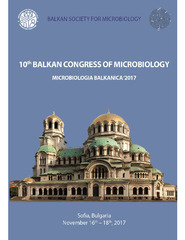Приказ основних података о документу
Determination of the level and source of microbial pollution in the Sava River Basin
| dc.creator | Kostić, Jovana | |
| dc.creator | Kolarević, Stoimir | |
| dc.creator | Kracun-Kolarevic, Margareta | |
| dc.creator | Gacic, Zoran | |
| dc.creator | Aborgiba, Mustafa | |
| dc.creator | Farnleitner, Andreas | |
| dc.creator | Reischer, Georg | |
| dc.creator | Linke, Rita | |
| dc.creator | Paunović, Momir | |
| dc.creator | Vuković-Gačić, Branka | |
| dc.date.accessioned | 2023-12-03T14:28:11Z | |
| dc.date.available | 2023-12-03T14:28:11Z | |
| dc.date.issued | 2017 | |
| dc.identifier.uri | http://rimsi.imsi.bg.ac.rs/handle/123456789/2654 | |
| dc.description.abstract | Introduction. The contamination of water bodies by sewage or manure is generally determined by fecal indicator bacteria. Specific differentiation between sources of contamination is of particular importance, since the health risk to humans is usually considered higher from human, than from animal fecal contamination. Quantitative PCR (qPCR)-based assays for analysis of human- or animal-associated genetic Bacteroidetes fecal markers have gained increased popularity in the field of microbial source tracking (MST). Aim. The aim of the present study was to assess the level and source of microbial pollution in the Sava River Basin (SRB). Materials and methods. The sampling at the SRB was performed in September 2015, at 15 locations. Additional samples were collected from 4 wastewater outlets. Quantification of total coliforms, E. coli and enterococci was performed with Colilert Quanti-Tray 2000 and MPN approach. The human-associated BacHum and HF183II, the ruminant-associated BacR and the pig-associated Pig2Bac fecal markers were enumerated by quantitative PCR (qPCR). Results. According to the concentrations of fecal indicator bacteria, the river samples were scattered within the classes I and II (slight to moderate pollution). According to all monitored indicators, samples collected at 3 wastewater outlets were excessively contaminated. The results of MST revealed the presence of human-associated fecal markers BacHum and HF183II at 13 locations. The ruminant-associated BacR and the pig-associated Pig-2-Bac markers were not detected. High correlation was observed between the standard fecal indicators and human associated fecal markers. Conclusions. The results reveal human origin of fecal pollution in the SRB and indicates the urgent need for effective wastewater treatment plants in water management. Acknowledgements. EU Seventh Framework Programme – GLOBAQUA (no. 603629-ENV-2013-6.2.1). Ministry of Education, Science and Technological Development of the Republic of Serbia projects no. 173045 and 173025, and the bilateral project Serbia and Austria: SER Ev. No. 451-03-01039/2015-09/33. | sr |
| dc.language.iso | en | sr |
| dc.publisher | Balkan Society for Microbiology | sr |
| dc.rights | openAccess | sr |
| dc.rights.uri | https://creativecommons.org/licenses/by/4.0/ | |
| dc.source | 10th Balkan Congress of Microbiology, Microbiologia Balkanica’2017, Sofia , Bulgaria | sr |
| dc.subject | microbial source tracking | sr |
| dc.subject | faecal indicators | sr |
| dc.subject | Sava River Basin | sr |
| dc.title | Determination of the level and source of microbial pollution in the Sava River Basin | sr |
| dc.type | conferenceObject | sr |
| dc.rights.license | BY | sr |
| dc.citation.spage | 379 | |
| dc.identifier.fulltext | http://rimsi.imsi.bg.ac.rs/bitstream/id/6802/bitstream_6802.pdf | |
| dc.identifier.rcub | https://hdl.handle.net/21.15107/rcub_rimsi_2654 | |
| dc.type.version | publishedVersion | sr |

